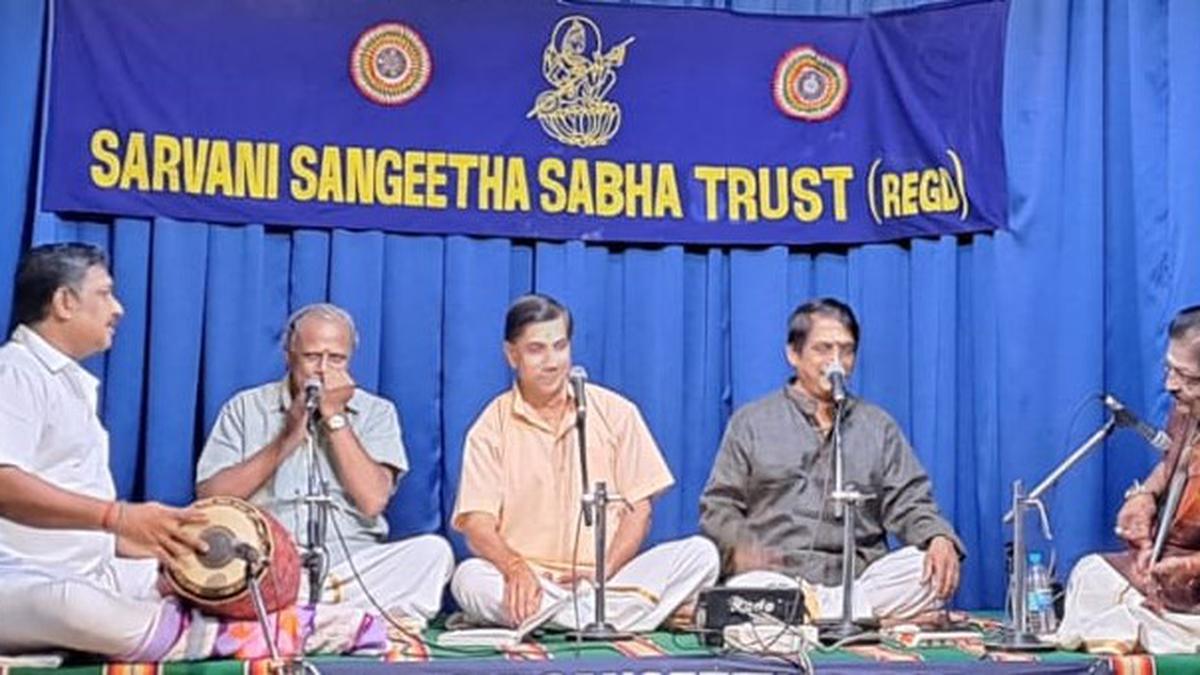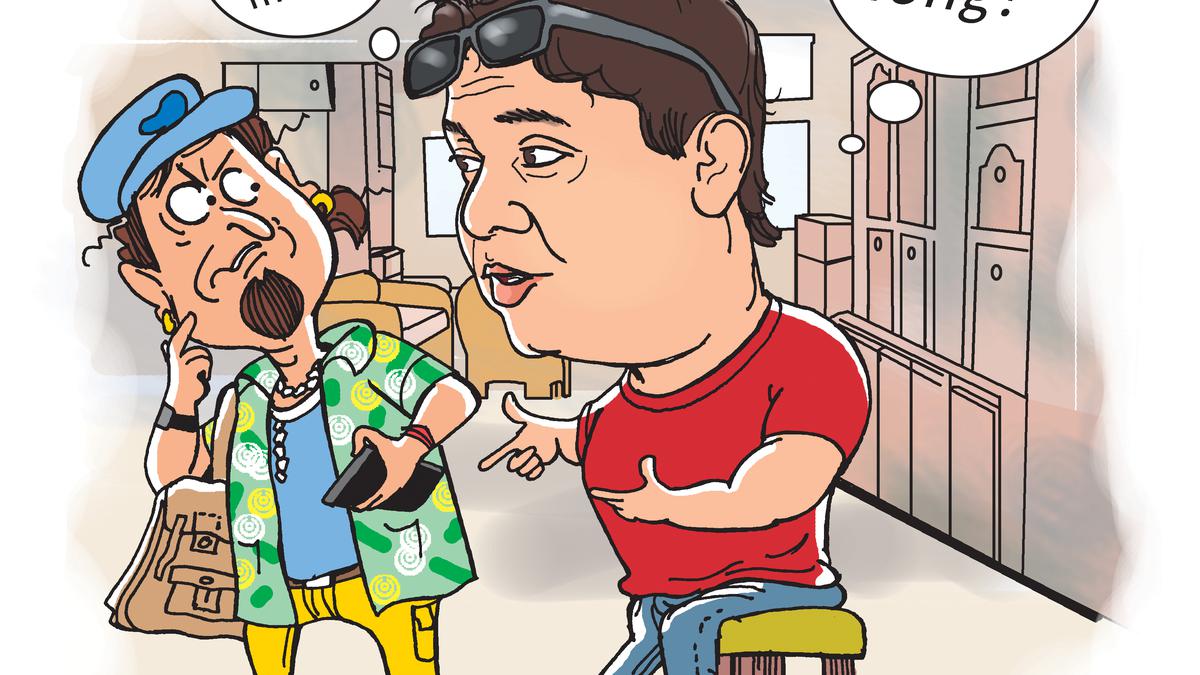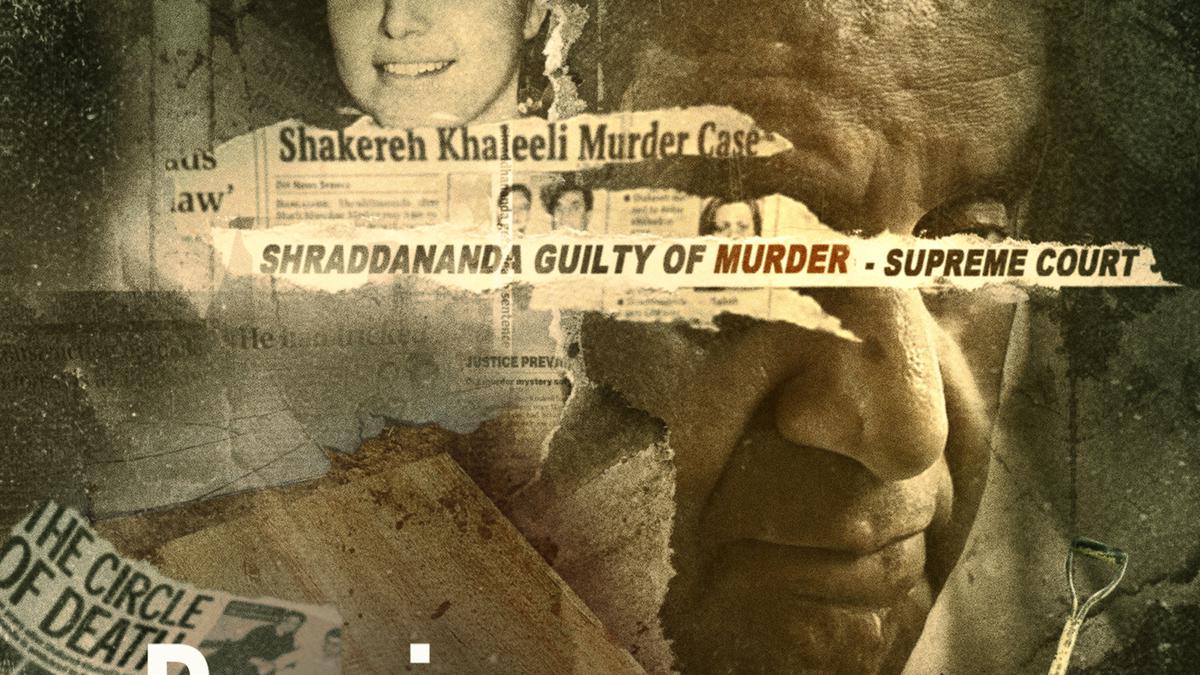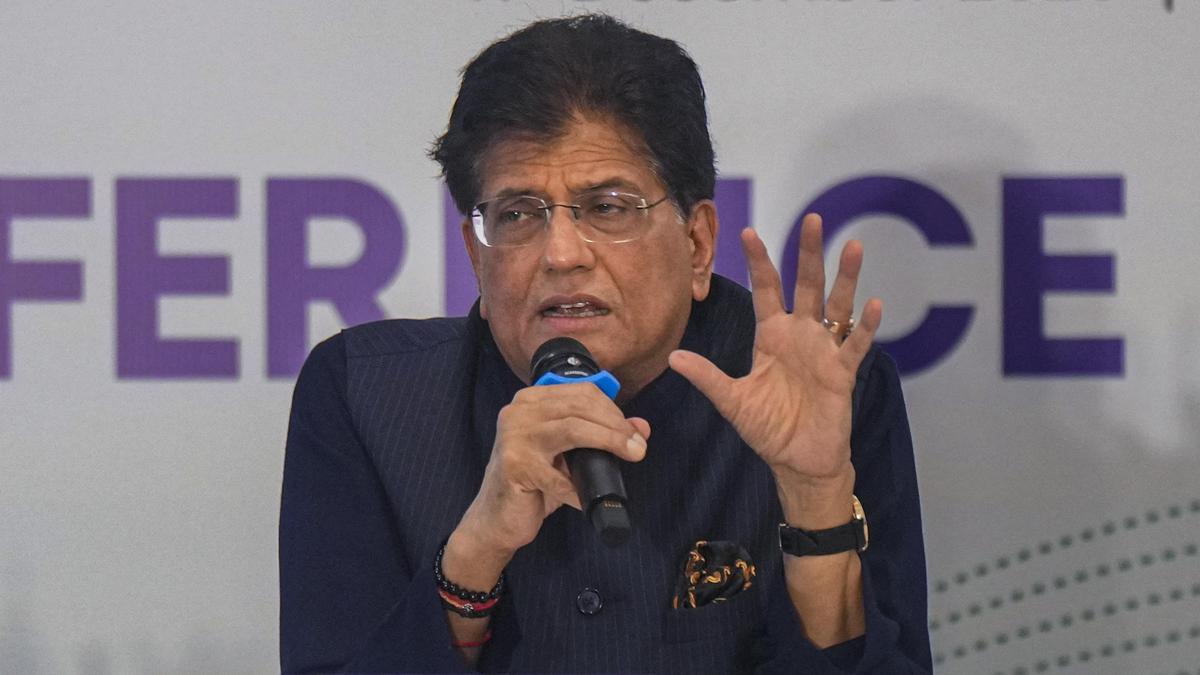V.L.V Sudharsan, with support from vocalist Calcutta V.N. Shankar, accompanied by Shertalai R. Ananthakrishnan on the mridangam, A.S. Krishnan on the morsing.
| Photo Credit: Photo Courtesy: Sarvani Sangeetha Sabha
‘Tyagayya-Annamacharya Sangitarchana’, presented Sarvani Sangeetha Sabha at Ragasudha Hall, was not just another concert dedicated to the two composers. The performer V.L.V Sudharsan, with support from vocalist Calcutta V.N. Shankar, had done a fair amount of research to highlight several special aspects that showed how the composers’ vision matched.
Kritis were chosen to depict how the two vaggeyakaras described their favourite deities through songs. Scholar Vaitheeswarankoil V. Parthasarathy introduced each composition with explanations drawn from works such as Kanakadhara Stotram, Narayaneeyam, and Bhaja Govindam. Therefore, the concert was not only raga treatises or swara sallies.
Rama being a form of Narayana, Sudharsan presented kritis by Annamacharya who is known for his keerthanas on Tirupati Venkateswara, while Shankar focused on Tyagaraja’s works.
Line up of songs
‘Suprabatham’, the invocation of the Lord, was the opening song — Sudharsan sang ‘Vinnapalu vinave’ in Bhoopalam and Shankar complimented it with ‘Melukovayya’ in Bowli.
Their next choice was the Dasavataram that featured Annamayya’s ‘Dolayam’ in Khamas and ‘Deena janavana’ in Subha Pantuvarali by Tyagaraja. The benefits of chanting Narayana’s name were highlighted through ‘Vinarabhagyamu Vishnu katha’ in Manirangu by Annamayya and countered with Tyagaraja’s ‘Ramakatha sudha’ in Madhyamavati. The concept of Jivatma-Paramatma came through ‘Mosamuna mayavi’ (Annamacharya) in raga Maladharini (a creation of Sudharsan) and ‘Mosaboga vinave’ in Gowlipandu (Tyagaraja). A swara section was added here.
Apt description
The greatness of the lotus feet of Narayana and Rama was brought out through Annamayya’s ‘Brahma kadigina padamu’ in Mukhari while Tyagaraja’s ‘Sri rama padama’ in Amruthavahini.
To justify the format of a concert, a brief raga alapana of Karaharapriya was included by Sudharsan. ‘Oka pari kokapari’ by Annamacharya in Karaharapriya and ‘Rama rama neevaramu’ in Anandabhairavi by Tyagaraja were rendered. Swaras were added to ‘Jagadekapati mena’. The power of the ‘Rama nama’ was reiterated through ‘Akati vellala’ in Revati and ‘Undethi ramudu’ in Harikambodhi. V.L. Kumar (Sudharshan’s brother) was on the violin and extended a commendable support. His brief alapana of the unique raga Maladharini needs special mention.
The percussion support by Shertalai R. Ananthakrishnan on the mridangam, A.S. Krishnan on the morsing and their brief tani were noteworthy.






